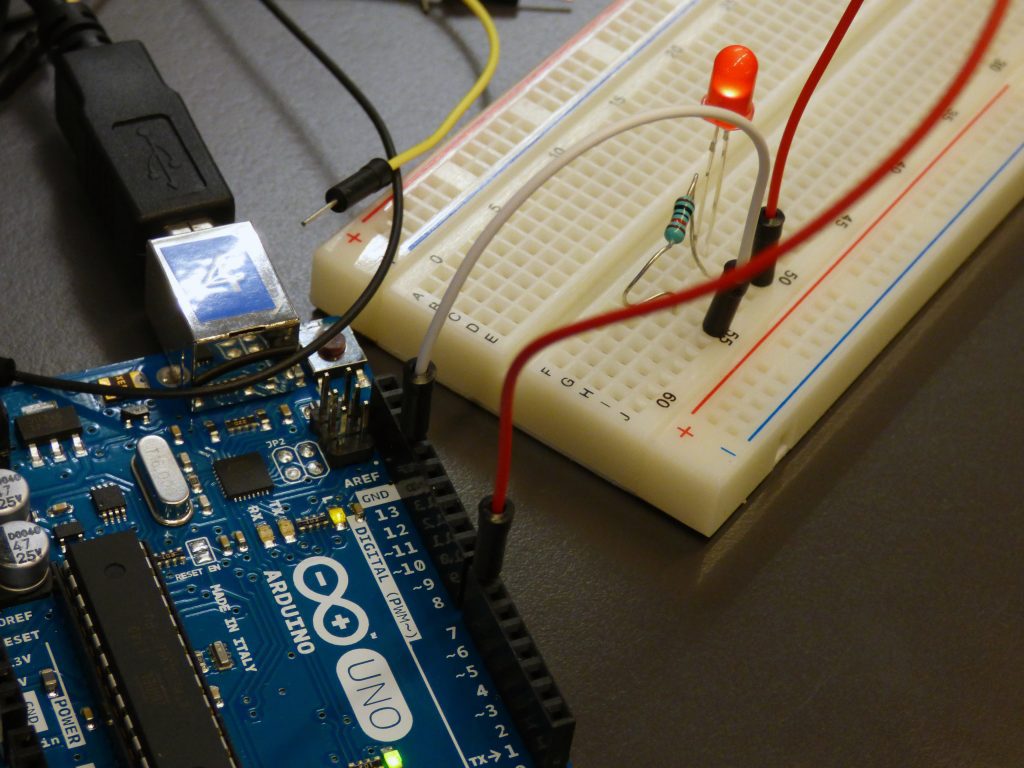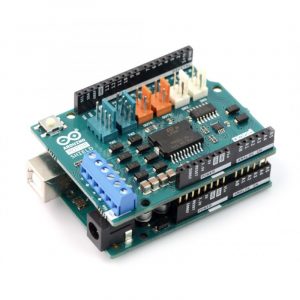Table of Contents:
Clone or the original?
As you know, Arduino has been a huge success and has become a globally recognized brand. However, the competition does not sleep and offers similar, often copied solutions. Do they match the original? Are they worth anything? In this article we’ll take a look if it’s worth to buy Arduino compatible clone and what you should pay attention to when choosing such option instead of original board.
Arduino – prototyping for everyone
Among electronic engineers and programmers, both hobbyists and professionals, Arduino is considered to be a kind of miniature tool, with which we can quickly check the functionality of our project in the prototype phase. It is enough to connect external add-ons such as potentiometers, sensors, LEDs or Arduino Shield overlays, which perform a specific range of functionality, such as wireless communication with a computer or control of heating and ventilation.

Next, we create the program code in Arduino IDE environment, using also ready-made libraries, upload it to the microcontroller memory placed on the board and we can observe the final effect! What’s more, we can do it using both original Arduino board and compatible clone, which will offer exactly the same features, but for lower price. However, before buying it, it’s worth to find out about few important details of such clone, to avoid buying a board with questionable build quality, which may come from untrusted source and, in extreme cases, damage your computer or external modules.
Why is there a difference between the price of a clone and the original Arduino?
In fact, Arduino clones are characterised by an identical design, both in terms of the components used and their arrangement on the PCB. This is due to the fact that Arduino is an open-source licensed platform. This means that the original creator of the Arduino platform makes all technical documentation, which includes e.g. electrical schematics and software, available to the public. From a legal point of view, any user can build and program their own Arduino clone. Buying an original board will very often turn out to be more expensive compared to a compatible clone that came out of another manufacturer, but by buying an original Arduino, you are supporting the original manufacturer’s research and development work leading to an improved product. However, the high price of the original compared to clones is also paying for the quality guarantee of the original product, but also the brand.
How to spot a fake Arduino that should arouse our vigilance?
Usually, identifying a fake Arduino board is very easy, as manufacturers of licensed clones usually put their logo on the PCB. However, if you come across a board that is labeled “Arduino” but its price is much lower than most shops that are official Arduino distributors, this is the first factor that should trigger your vigilance.
The second striking element is the colour of the board. Genuine Arduino is turquoise in colour, while most counterfeits with Arduino logo, very often are dark blue in colour. Also, all markings on the board should have the same font with high print quality. The Arduino mark in the form of “ARDUINO” with an infinity symbol with a minus on the left and a plus on the right, should be accompanied by “®” in the upper right corner. The alphanumeric characters in italics of poor resolution and the absence of “®” instead of “®” (e.g. a “™”) probably means a counterfeit which is not worth wasting our valuable time on.
Is it worth buying an Arduino clone?
A good number of Arduino clones produced by specific manufacturers, usually meet all the functional requirements just like in original Arduino boards. This is one of the proofs that for any thing to be good and meet our expectations, it doesn’t have to be an original branded product, and it can be a replacement from another manufacturer and still function the same as the original. However, you still need to be vigilant when buying a particular clone. Some clones are very often badly made, i.e. the elements on the board are not soldered carefully, and when running such clones problems may occur both on the hardware and software background.

When choosing an Arduino clone, ask the vendor or visit the board manufacturer’s website to verify that it is a licensed product from the original manufacturer. For example, Arduino clones such as RedBoard from SparkFun Electronics and DFRDuino from DFRobot – these are boards manufactured under license from the original Arduino manufacturer and provide full hardware compatibility with the original Arduino UNO R3 board and the Arduino IDE development environment.
And if you want to call your Arduino clone “Arduino”, without spending money on a “real” Arduino – there’s nothing stopping you from printing a sticker with “Arduinio” logo, and sticking it on PCB of your clone. However, remember that you can only do this for your own use, not to sell such a device!
How useful was this post?
Click on a star to rate it!
Average rating 0 / 5. Vote count: 0
No votes so far! Be the first to rate this post.





















